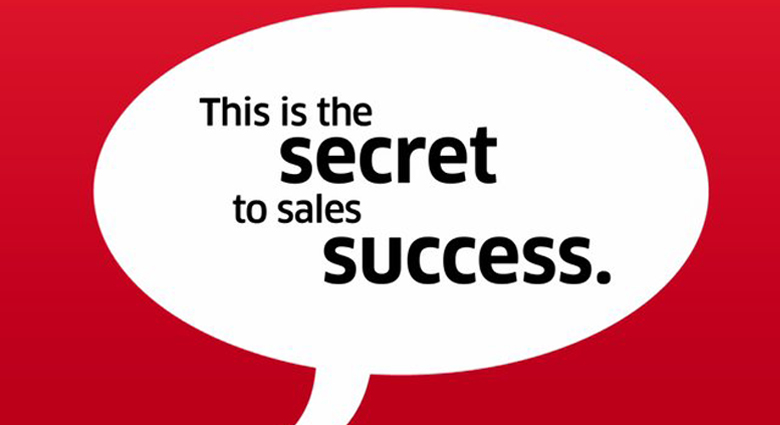We all want to be sold to by somebody who seems “real” to us. Maybe this is in response to a history of feeling generally disenchanted with our leaders—some of us out there can’t help feeling that we are often being duped!
Leaders and followers alike associate authenticity with sincerity, honesty, and integrity. When we feel someone is “authentic” we often follow a skewed logic that says that person is without doubt “The Real Thing!” The reversed bias can mean that when we feel unsettled around another’s behavior, then there is something that feels “inauthentic” about them.
What idea of ourselves do we want to co-create with those we lead or sell to?
This mode of thinking has become a covert shorthand for not “liking” another’s presence when they are leading or selling to us: we end up saying, “they don’t seem authentic” rather than “I just don’t like their ideas! It’s not a fit.” However, this thought process is predicated upon an utopian ideal whereby if everyone were 100 percent authentic with each other all the time we would all get along fine. Accordingly, this thinking renders our reality where pretence is an imperative social skills, a dystopia. In this way, the current concept of authenticity is often fudged—many assume that authenticity is an innate and binary quality.
However, I would suggest that what defines our authenticity is at least in part what others see in our behavior alongside what we see in our own. It’s a collaboration of perceptions that produces an ongoing idea of you. This makes authenticity more of a developing work of art than a finished object.
So for the people that I help in leadership and sales to communicate with more impact—to stand out, win trust and gain credibility—the question becomes, “what idea of ourselves do we want to co-create with those we lead or sell to?” Now, if authenticity were purely an innate quality, there would be little you or I could do to manage it and, therefore, little you could do to make yourself more effective. For some of us, we often seek to be recognized as more than who we and others think we are or should be. If you are one of those people, then the challenge is managing your authenticity not to hold you back from opportunities, but to assist you in reaching your desires or dreams, paradoxical though it may undoubtedly sound.
When I work with individuals and organizations, we look at choosing purposefully what behaviors we express that will amplify the attributes we already have—or to bring out in ourselves qualities that we recognize in people who inspire us—in order to effectively influence and persuade not only those around us as to who we are, but ourselves too. I have found the most effective method to intervene in how we normally behave is the use of nonverbal communication—body language! For me, adjusting and augmenting our body language can cut straight to the stimulus for the ideas we can have about ourselves and consequently that others have of us.You change your behavior and you change your mind—and that or others around you.
Yes, of course this is a manipulation. It’s manipulating what skills and tools we innately have to work better for us at helping us get closer to how and what we want to be. It's starting from where you are and then choosing to do the things to help you be who you could be. As one of my heros, Jim Henson said via his alter-ego Kermit, “Take what you got and fly with it!”
Great leaders and sales professionals (including Kermit) are good at making clear decisions about which of their traits they should reveal and amplify to whom and at what points. They furthermore make strategic decisions about what more to reveal (and when) and what to leave concealed. Putting any morals aside, I always say “There is no bad behavior; just results you did or did not want.” Successful leaders and salespeople remain focused on their desired outcomes but never lose sight of the behaviors they need to employ, with whom and when, to get there. They are behaving on purpose rather than by accident, cognizant of their responsibility for the successes or for the fall-outs. As Kurt Vonnegut wrote “We are what we pretend to be, so we must be careful about what we pretend to be.”
I am not advocating “fake it till you make it”. Not that there is anything wrong with that. Even Picasso knew that the effect of the art was ultimately more important than the artist. Picasso would even call out known fake canvasses as real Picassos and then some of his own pieces of art as fakes, all because they did not have the desired effect regardless of his authentic hand in them.
What I am suggesting is “behave like it—so you are it”. Leaders and sales professionals who know how to manage their authenticity in this way will be all the more effective for it. So here are my top body language tips to help you take more control of the idea of who you are by choosing to employ those behaviors that help you realize your goals.
DISPLAY YOURSELF
When speaking at a large event have a lavaliere or handheld mic and step away from the podium. If sitting with a client, pull your chair back from the table—in short, display more of your body to your audience. Your audience's instinctual “reptilian” brain needs to see your body and your body language to decide what they think your intentions and feelings are towards them. Place your hands in what I have trademarked the TruthPlane, the horizontal plane that extends 180 degrees out of your navel area. Show your palms open with nothing in your hands to let others know that you mean no harm and are speaking for their benefit. This is a universally recognised 'friendly' gesture. Bringing the audience's unconscious attention to this vulnerable area of your body makes them feel that you are very confident. By assuming this physicality, you will feel really confident too even though you may have felt like you were bluffing it moments before.
Behave like it — so you are it.
ATTRACT RECOGNITION
Keep your gestures symmetrical. The brain understands symmetry in the body more easily than asymmetry, and we find it more appealing. When giving a complex message, avoid complex asymmetrical movement—so no fiddling with your pen even though it feels comfortable for you! It is hard for the brain to decode complex verbal language when it is concentrating on complex nonverbal behaviour. Although the message may be complicated, keep your body language simple.
STOP READING—START LEADING
It is instinctual for us to unconsciously read other’s body language in order to form theories as to how they feel and what they intend towards us. It’s truly “authentic” to judge others and feel that our judgements are spot-on accurate. With this in mind, be more inauthentic and stop trying to read other people's body language consciously. Generally, most of us stand little more than a 50/50 chance of getting it right. But generally most of us think we are really good at it. Instead, concentrate on influencing your audience to mirror your simple and positive nonverbal behaviour, and they will be extremely likely to trust and engage with you every time you communicate.





.png)




What Did You Think?